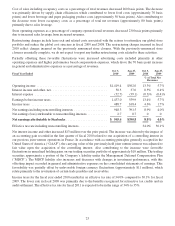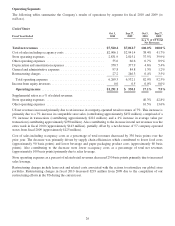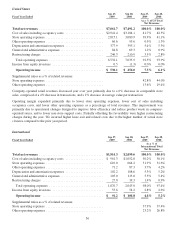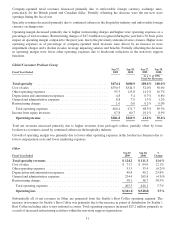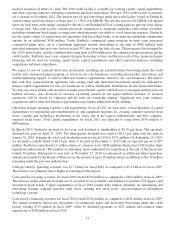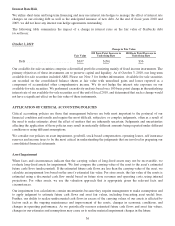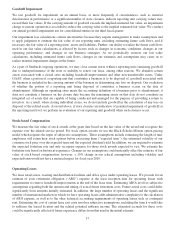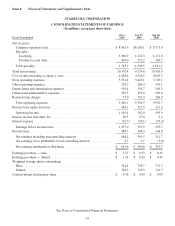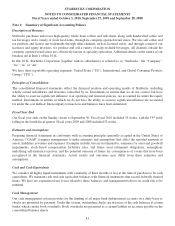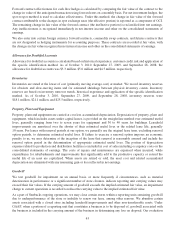Starbucks 2010 Annual Report Download - page 41
Download and view the complete annual report
Please find page 41 of the 2010 Starbucks annual report below. You can navigate through the pages in the report by either clicking on the pages listed below, or by using the keyword search tool below to find specific information within the annual report.
The sensitivity analyses disclosed below provide only a limited, point-in-time view of the market risk of the
financial instruments discussed. The actual impact of the respective underlying rates and price changes on the
financial instruments may differ significantly from those shown in the sensitivity analyses.
Commodity Price Risk
We purchase commodity inputs, including coffee, dairy products and diesel that are used in our operations and are
subject to price fluctuations that impact our financial results. In addition to fixed-price and price-to-be-fixed
contracts for coffee purchases, we have entered into commodity hedges to manage commodity price risk using
financial derivative instruments. We performed a sensitivity analysis based on a 10% change in the underlying
commodity prices of our commodity hedges, as of the end of fiscal 2010, and determined that such a change would
not have a significant effect on the fair value of these instruments.
Foreign Currency Exchange Risk
The majority of our revenue, expense and capital purchasing activities are transacted in US dollars. However,
because a portion of our operations consists of activities outside of the US, we have transactions in other currencies,
primarily the Canadian dollar, British pound, euro, and Japanese yen. As a result, we may engage in transactions
involving various derivative instruments to hedge revenues, inventory purchases, assets, and liabilities denominated
in foreign currencies.
As of October 3, 2010, Starbucks had forward foreign exchange contracts that hedge portions of anticipated
international revenue streams and inventory purchases. In addition, we had forward foreign exchange contracts that
qualify as accounting hedges of our net investment in Starbucks Japan to minimize foreign currency exposure.
Starbucks also had forward foreign exchange contracts that are not designated as hedging instruments for accounting
purposes (free standing derivatives), but which largely offset the financial impact of translating certain foreign
currency denominated payables and receivables. Increases or decreases in the fair value of these hedges are
generally offset by corresponding decreases or increases in the US dollar value of our foreign currency denominated
payables and receivables (i.e. “hedged items”) that would occur within the hedging period.
The following table summarizes the potential impact to Starbucks future net earnings and other comprehensive
income (“OCI”) from changes in the fair value of these derivative financial instruments due in turn to a change in
the value of the US dollar as compared to the level of foreign exchange rates. The information provided below
relates only to the hedging instruments and does not represent the corresponding changes in the underlying hedged
items (in millions):
October 3, 2010
Increase/(Decrease) to Net Earnings Increase/(Decrease) to OCI
10% Increase in
Underlying Rate
10% Decrease in
Underlying Rate
10% Increase in
Underlying Rate
10% Decrease in
Underlying Rate
Foreigncurrencyhedges.............. $46 $(46) $13 $(13)
Equity Security Price Risk
We have minimal exposure to price fluctuations on equity mutual funds and equity exchange-traded funds within
our trading portfolio. The trading securities approximate a portion of our liability under the MDCP. A corresponding
liability is included in accrued compensation and related costs on the consolidated balance sheets. These investments
are recorded at fair value with unrealized gains and losses recognized in net interest income and other in the
consolidated statements of earnings. The offsetting changes in the MDCP liability are recorded in general and
administrative expenses. We performed a sensitivity analysis based on a 10% change in the underlying equity prices
of our investments as of the end of fiscal 2010 and determined that such a change would not have a significant effect
on the fair value of these instruments.
35


